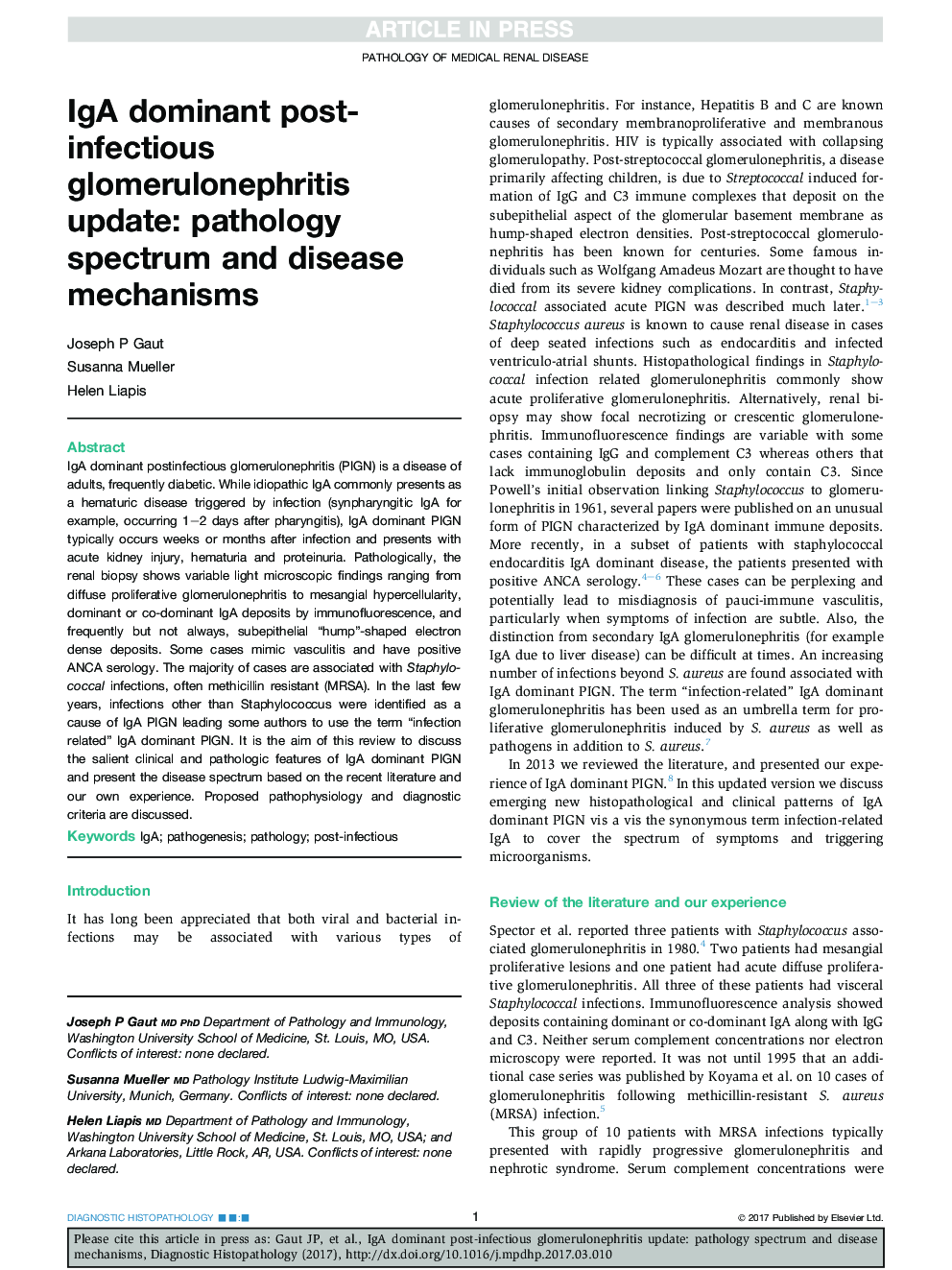| Article ID | Journal | Published Year | Pages | File Type |
|---|---|---|---|---|
| 5716032 | Diagnostic Histopathology | 2017 | 7 Pages |
Abstract
IgA dominant postinfectious glomerulonephritis (PIGN) is a disease of adults, frequently diabetic. While idiopathic IgA commonly presents as a hematuric disease triggered by infection (synpharyngitic IgA for example, occurring 1-2 days after pharyngitis), IgA dominant PIGN typically occurs weeks or months after infection and presents with acute kidney injury, hematuria and proteinuria. Pathologically, the renal biopsy shows variable light microscopic findings ranging from diffuse proliferative glomerulonephritis to mesangial hypercellularity, dominant or co-dominant IgA deposits by immunofluorescence, and frequently but not always, subepithelial “hump”-shaped electron dense deposits. Some cases mimic vasculitis and have positive ANCA serology. The majority of cases are associated with Staphylococcal infections, often methicillin resistant (MRSA). In the last few years, infections other than Staphylococcus were identified as a cause of IgA PIGN leading some authors to use the term “infection related” IgA dominant PIGN. It is the aim of this review to discuss the salient clinical and pathologic features of IgA dominant PIGN and present the disease spectrum based on the recent literature and our own experience. Proposed pathophysiology and diagnostic criteria are discussed.
Related Topics
Health Sciences
Medicine and Dentistry
Pathology and Medical Technology
Authors
Joseph P. Gaut, Susanna Mueller, Helen Liapis,
